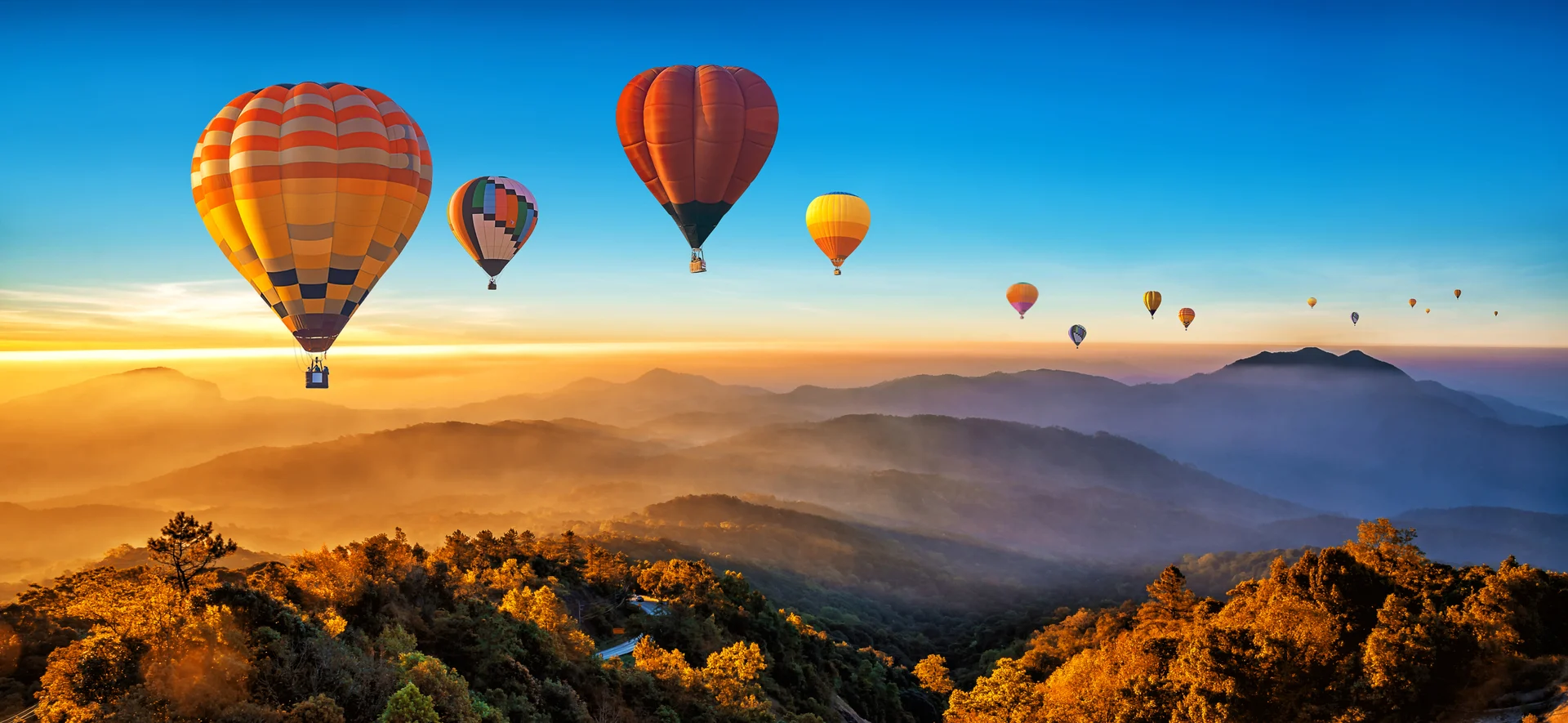10 animals you (almost) always see on safari
06/11/2023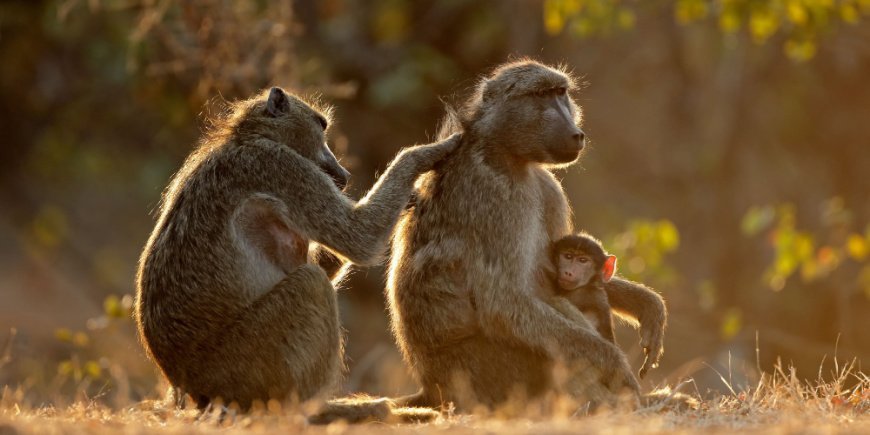
There are no guarantees on a safari in Africa, and you can never be absolutely sure which animals you will see.
That’s what makes all our tours so unique!
However, there are certain animals that you can (almost) always be certain of spotting at our African destinations.
We’ve made a list of 10 of them here.
1. The zebra
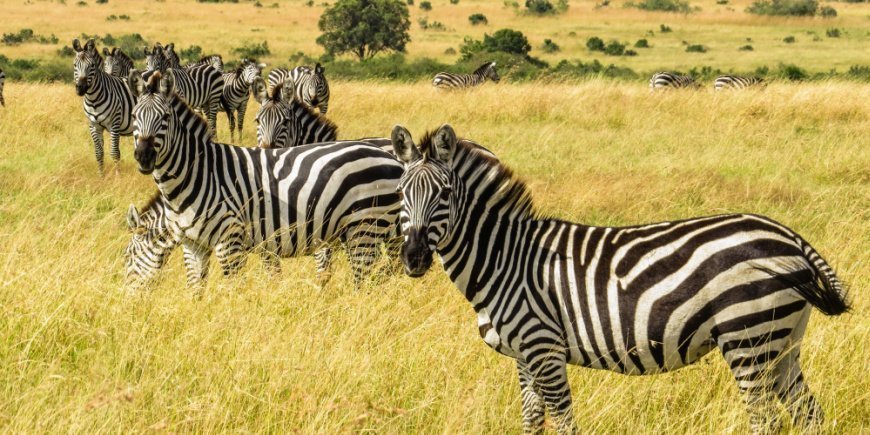
You can easily recognise the zebra from its black and white stripes – but whether it is black with white stripes or white with black stripes is still much discussed.
The black-and-white pattern is unique to each zebra, just as fingerprints are to humans, but scientists are still not entirely sure why the zebra has stripes at all. Some people believe that it is so that they are able to recognise each other, while others believe that the stripes make it harder for the predators to focus on the zebras.
Despite the mysteries surrounding the stripes, they are what make the zebras so beautiful to observe!
2. The giraffe
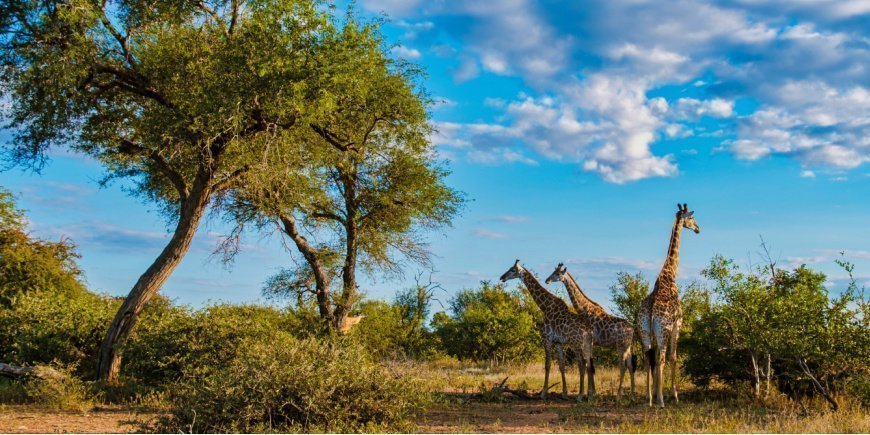
Nothing screams African safari like the giraffe.
With its spectacular height, it’s no surprise that the giraffe holds the record as the world’s tallest terrestrial animal.
The long neck enables the giraffe to eat leaves from the tall trees – something it spends most of its day doing.
The giraffe is easy to recognise from its characteristic appearance, and it’s also a herd animal. So, you’ll most often see several giraffes gathered in one place, making it even easier to spot in the landscape.
3. The impala
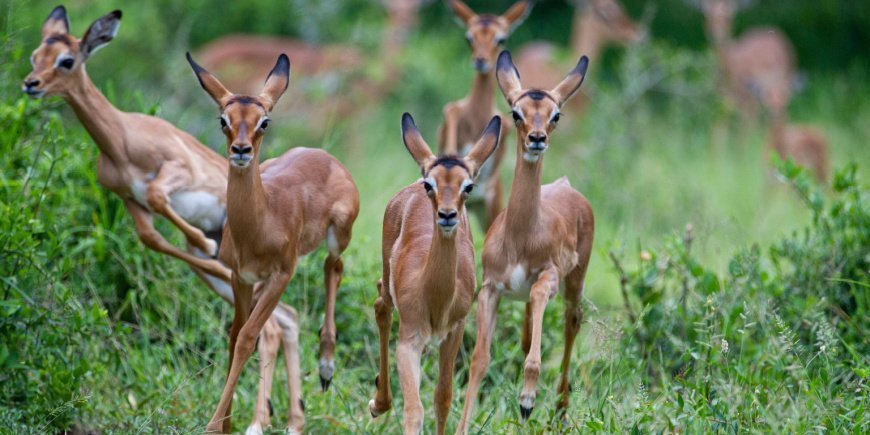
The impala is one of the most common antelopes and perhaps also the most graceful with its slender and lean body. Impala males are also known for their beautiful spiral horns, which they use in battle with other males.
The impala can reach a speed of up to 60 km/h, which is useful because it is often prey for the African predators. In fact, half of all newborn impalas fall victim within the first weeks of their lives.
And speaking of newborns, the females can postpone the birth of a calf by up to a month if the conditions are not favourable for a birth.
You’d have to be VERY unlucky not to spot the impala on the African savannah.
4. The guinea fowl
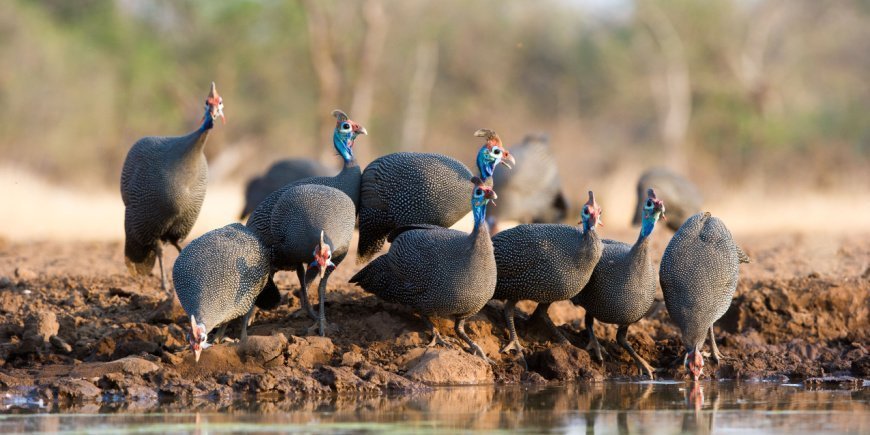
The guinea fowl is very common in Africa, and its behaviour is reminiscent of the chickens we know from home.
However, you will be able to spot quite a few differences. Unlike our chickens, the guinea fowl is characterised by its grey plumage filled with small white spots. The guinea fowl is also sometimes called a “helmeted guinea fowl”, because some of the species have an almost helmet-like growth on their head!
Guinea fowl are quite comical at times. They love looking at their own reflection, for example, and can spend hours doing it.
5. The hyena
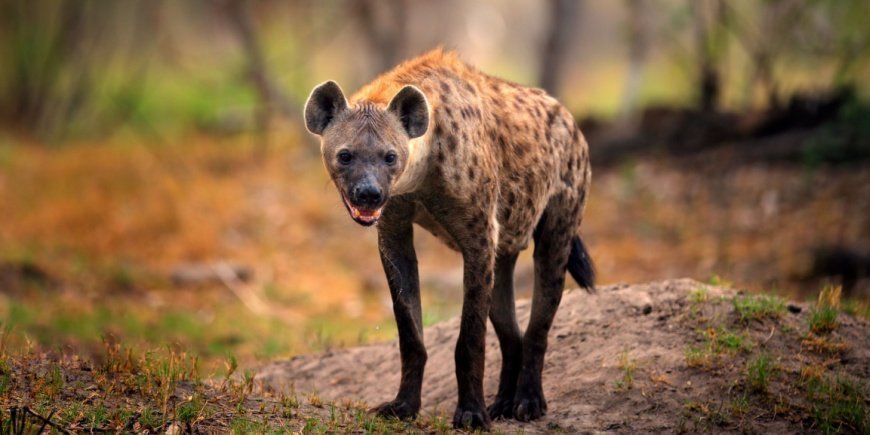
Hyenas do not have the best reputation in the animal kingdom.
They look rather odd: their shoulders are higher than their hind legs, giving them a sloping back, and they have a massive head. And they are also known as scavengers who eat the remains left by other predators, which is not a particularly charming trait.
But hyenas are actually also skilled hunters, and they work together in packs to take down their prey. At the same time, they do a lot for nature’s ecosystems when they eat the lions’ leftovers!
6. The elephant
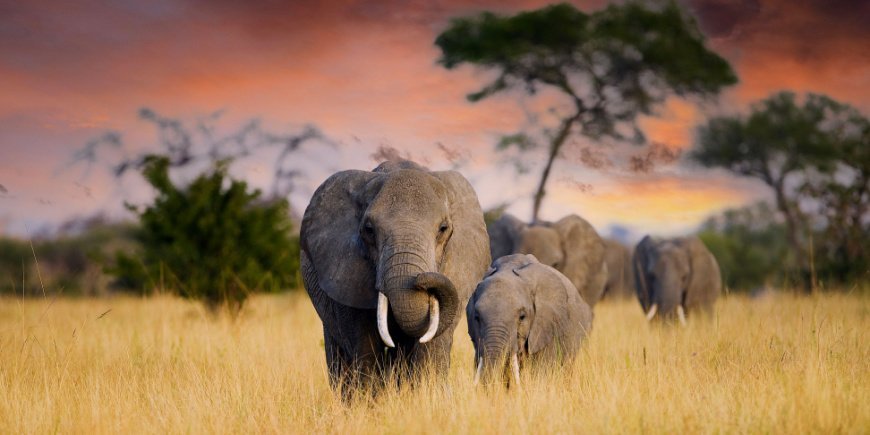
At the vast majority of our destinations in Africa, you can see the African elephant – the largest land animal on Earth! They weigh from two to seven tonnes, they can live up to the age of 70, and they are part of Africa’s Big 5.
Elephants live in matriarchal herds, which means that the female elephants lead them. The herds therefore consist of females and their young. So, if you see an elephant on its own, it will most often be a male.
Elephants are also known to be intelligent and empathetic creatures. Did you know, for example, that elephants are believed to be able to recognise themselves in a mirror and that they show signs of grief over the death of herd members?
7. The baboon
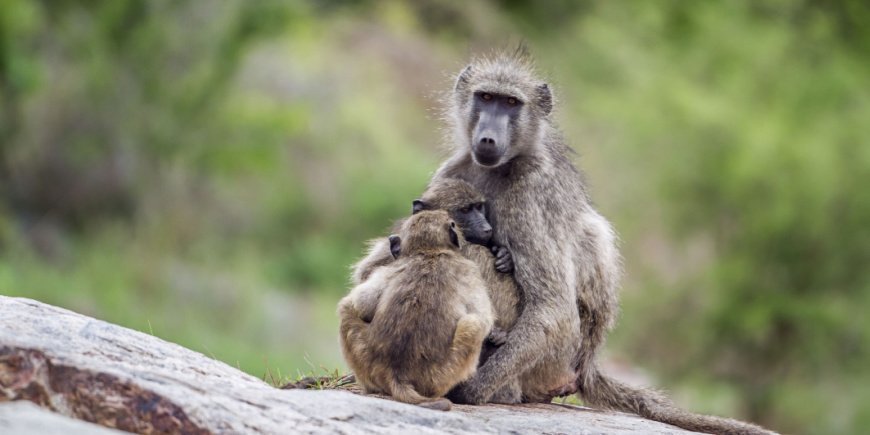
The baboon is one of the largest monkey species in the world. And the baboon is actually a close relative of humans, as we share a whopping 94% of the same DNA!
Female baboons use their recognisable red behinds to indicate that they are ready to mate. The redder and the more swollen their bottom, the more ready she is to mate.
Maybe you’ve heard of or seen monkeys picking at each other’s fur? Baboons do that, too. They actually use it as a form of communication, and picking at each other’s fur is used, among other things, to calm other baboons in the troop.
8. The warthog
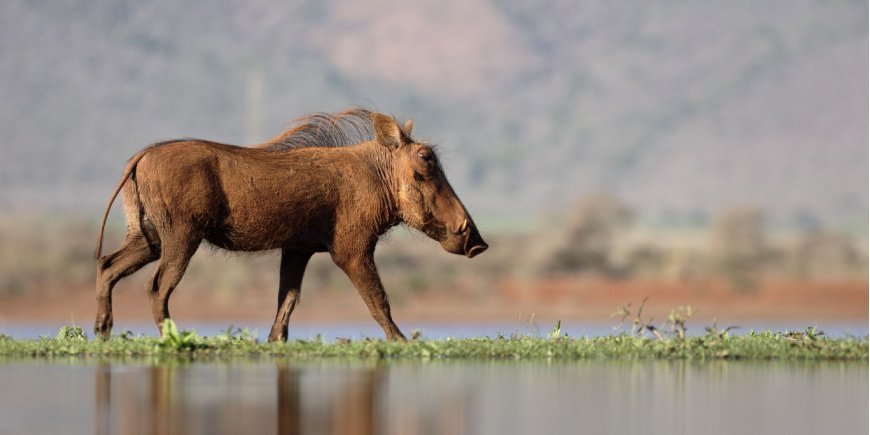
The name “warthog” is perhaps not the prettiest on the savannah. But there is actually a reason behind the name.
The warthog has four knobbly growths on its face, which almost look like large warts.
In addition to the “warts”, you can recognise warthogs from their large tusks, which they use, among other things, to fight with.
But as dangerous as their 30-centimetre-long tusks look, the warthog actually prefers to flee from predators if they are in danger.
9. The hornbill
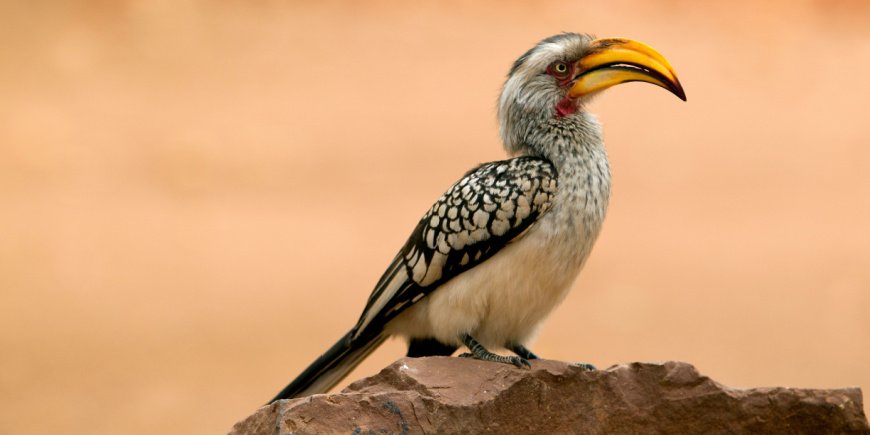
You’re pretty much guaranteed to see a hornbill on safari!
The hornbill is named after its special beak, which looks like a horn in most species. However, there are about 60 different species of hornbills, all of which look different.
When the females are to hatch their eggs, it takes place in a hole in a tree, where they build a nest. The male then builds a clay wall in front of the hole, trapping the female inside, where she can remain for several months. Fortunately, it is not an act of malice, but actually to protect the female from predators.
10. The Lion
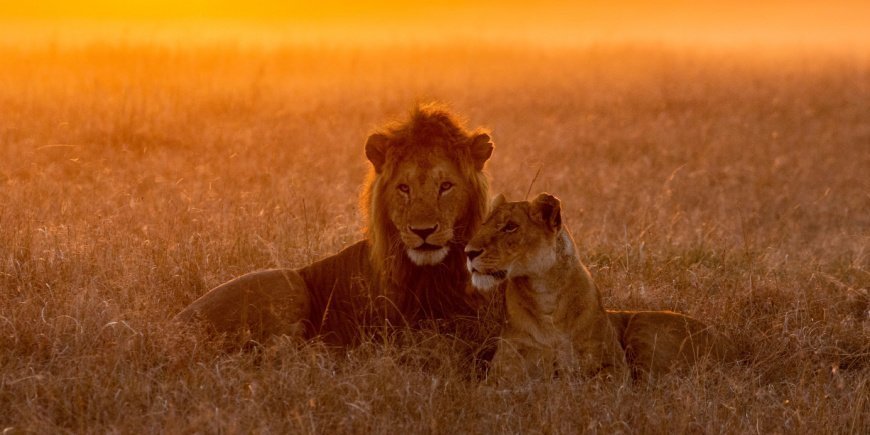
The king of animals – the lion. The one we all want to see on safari. And it is little wonder that the lion has been nicknamed the “king of animals”, because the males look so majestic with their enormous manes. The lion is also the second largest feline on Earth.
Lions are social felines, and a lion pack consists of both males and females. The males are above the females in the hierarchy, and in the females also have a hierarchy among themselves.
Sadly, the lion is an endangered species, so even if the lion is often seen at our destinations, it is the one of the 10 animals mentioned on this page that you may have to look for the longest.
